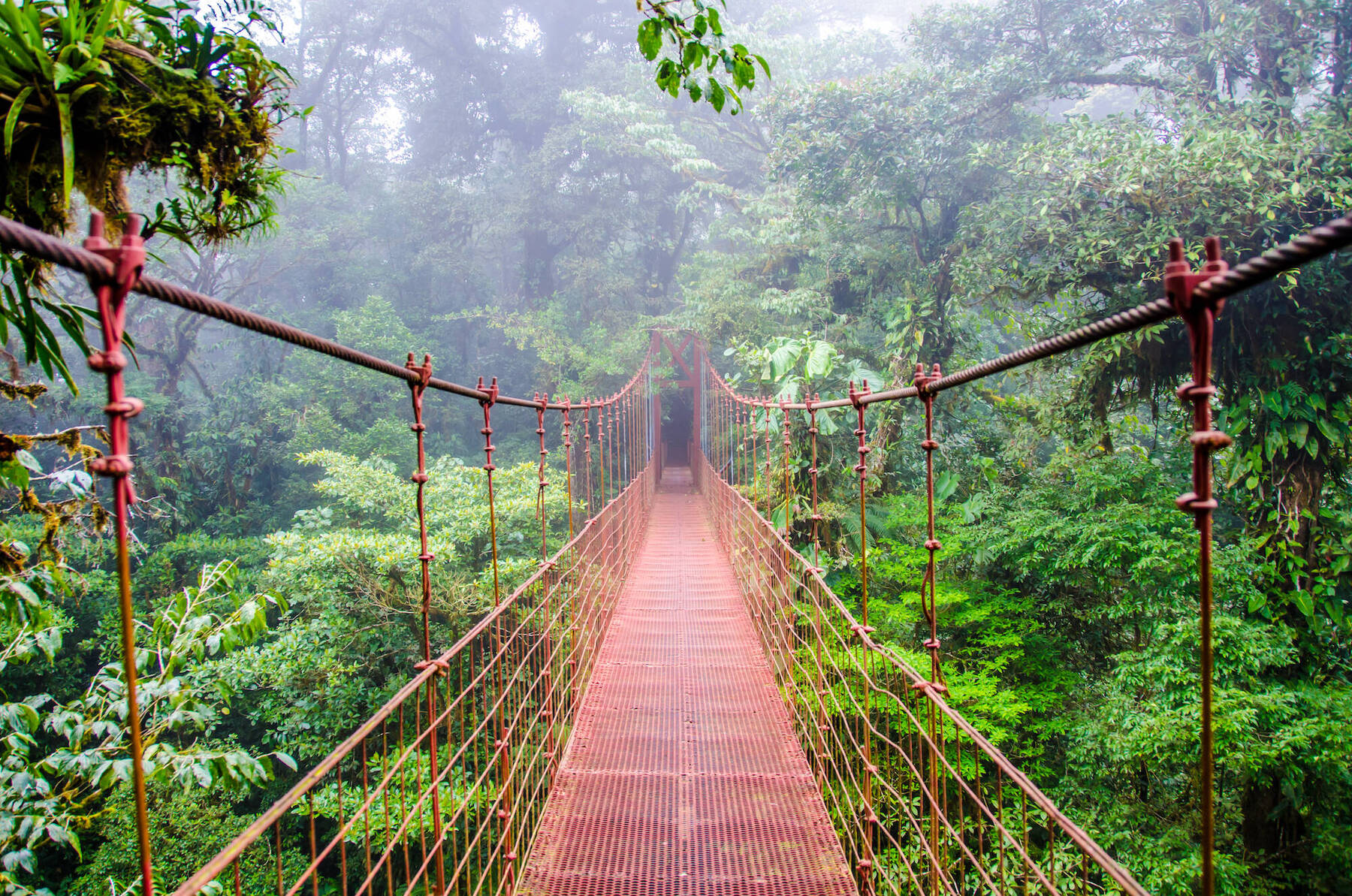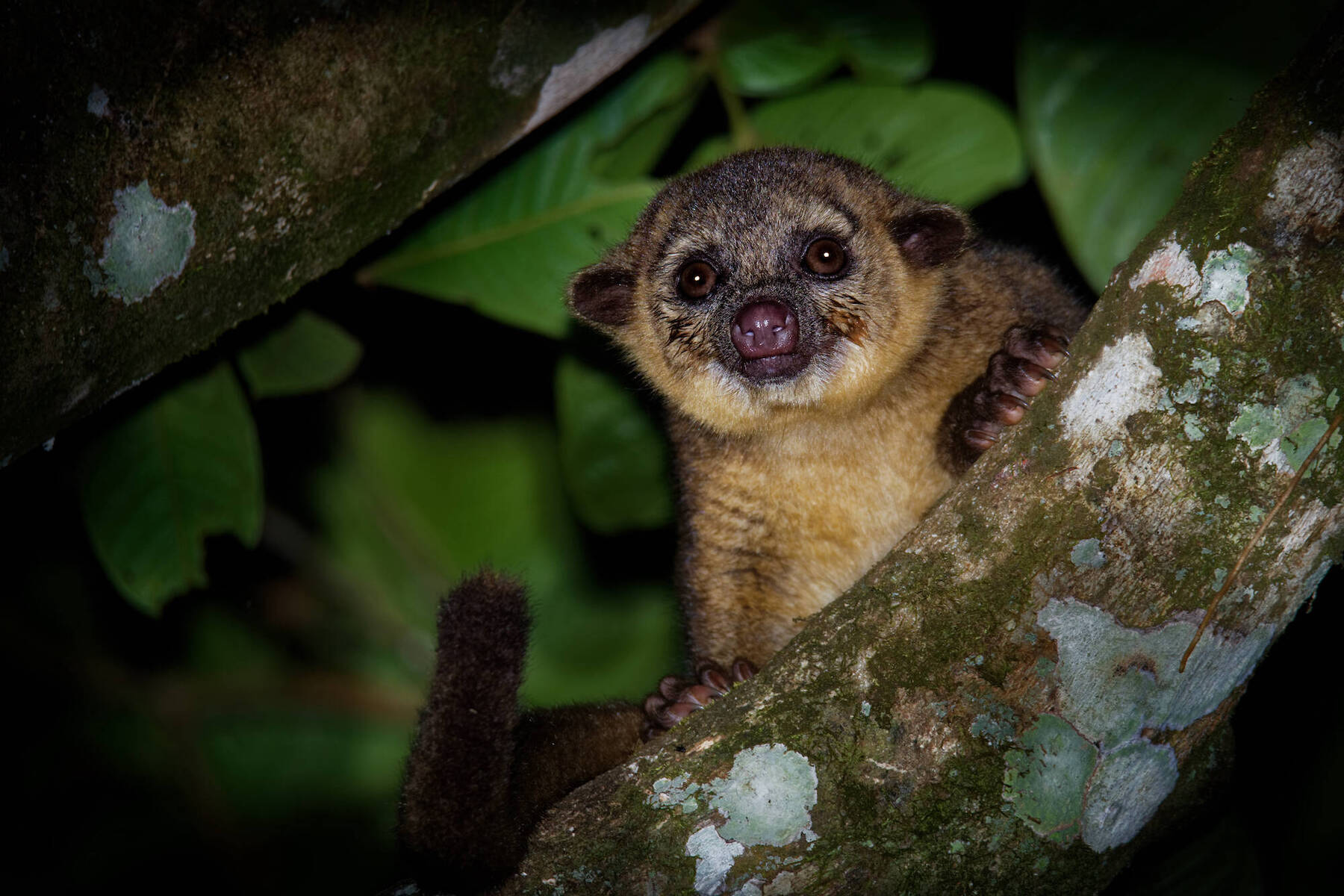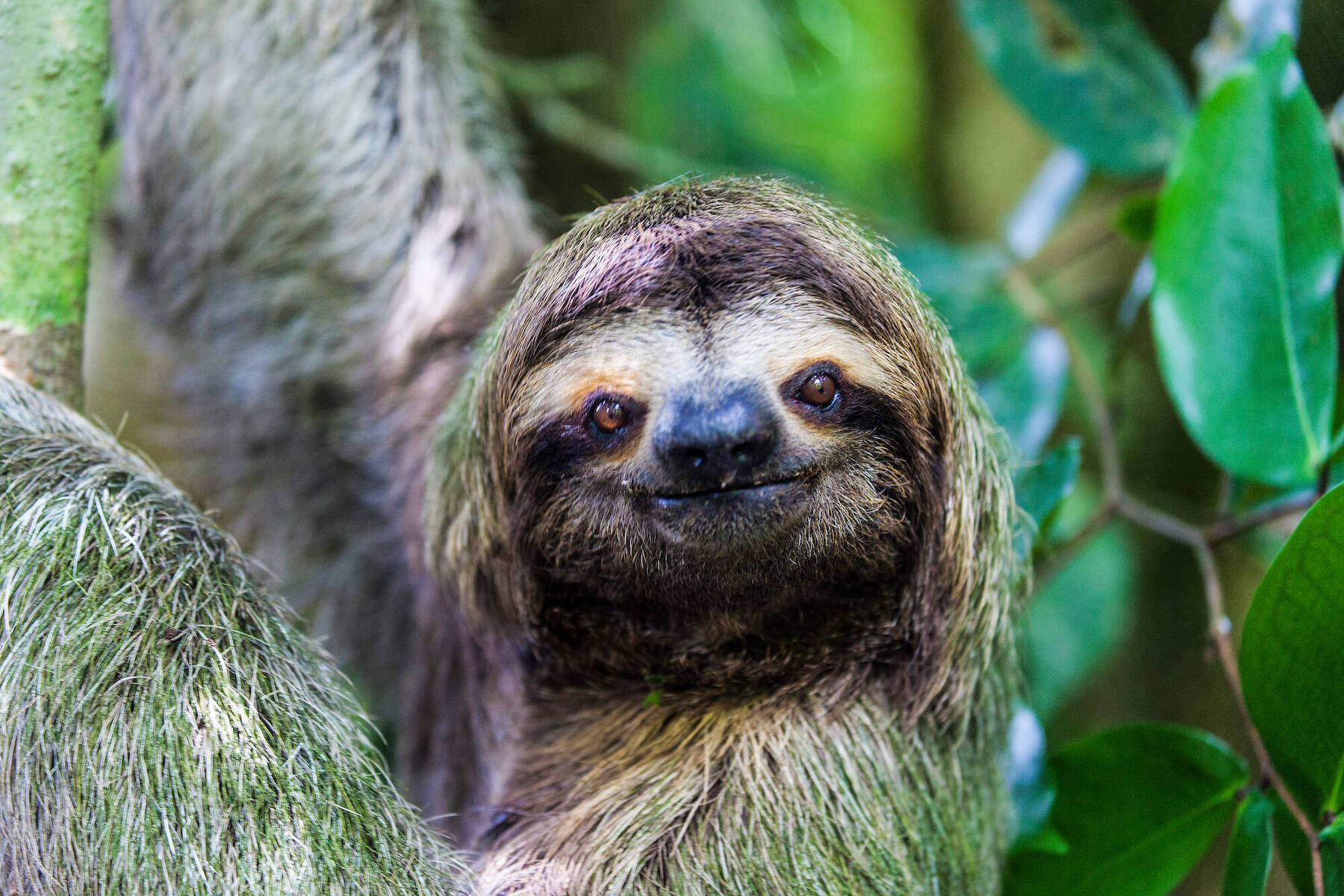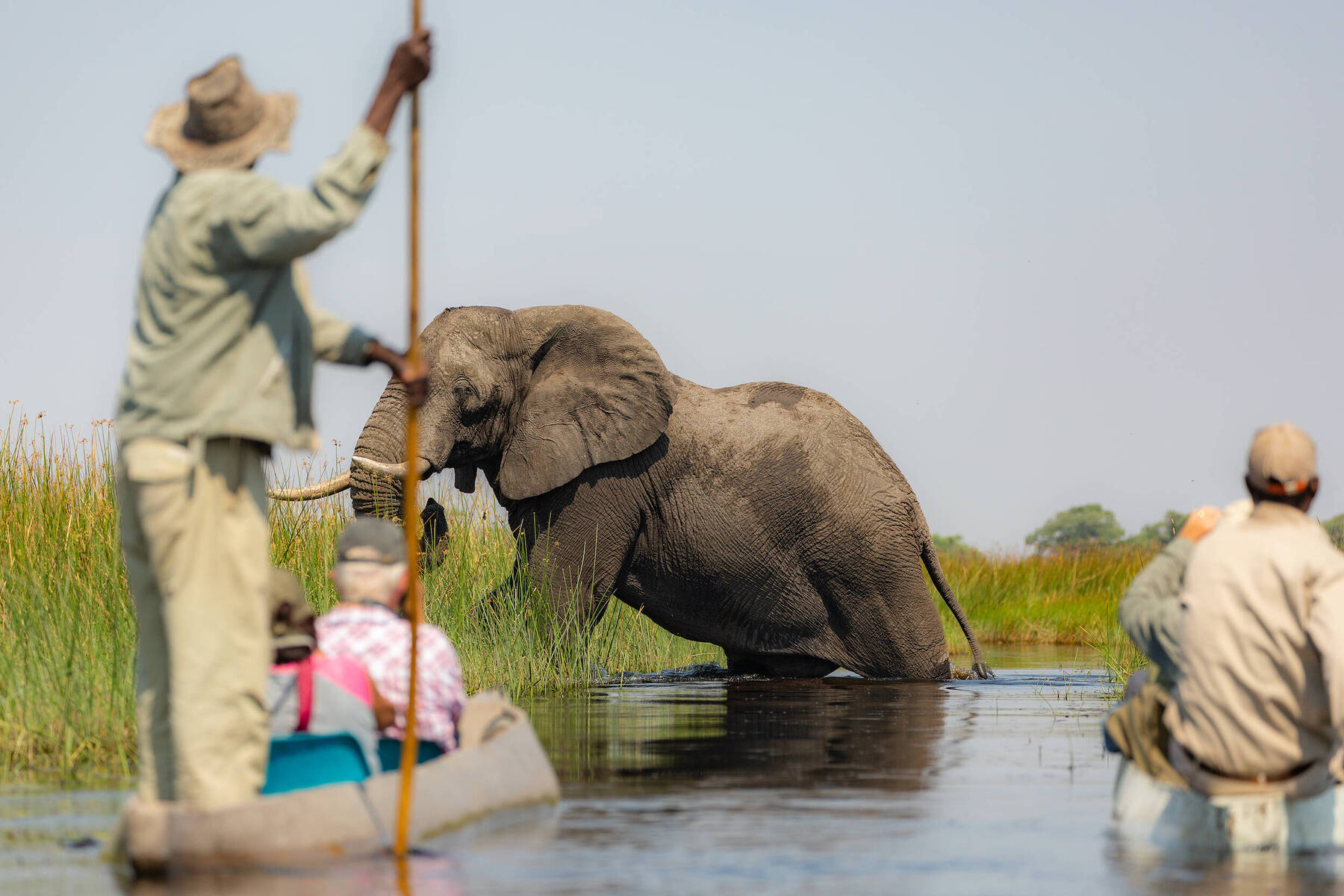Walk in Monteverde Cloud Forest Wildlife Biological Reserve
Monteverde is a small town within a region in northern Costa Rica of the same name which includes two other towns, Santa Elena and Cerro Plano. At an altitude of around 1400 metres, the forests here are cloud forests as they are almost continuously covered by cloud or mist. Monteverde Cloud Forest is comprised of approximately 25,946 acres. Visitor numbers are limited to 450 per day, with only 250 allowed to enter at a time. A little crowded when you first get in, once groups move on you’ll feel as if you have the forest to yourself.
Take a guided tour. Guides have telescopes and are able to spot camouflaged animals, birdlife and insects which to the untrained eye would be missed. They’re also in contact with others via radio so as not to miss sightings of wildlife. It’s incredibly hard to spot a sloth, their moss-covered fur like a dirty rug, blending into the trees they lie in.
Bromeliads, hibiscus and orchids add colour to the verdant damp greenery of ferns, vines and a huge variety of trees both delicate, forming lacy canopies overhead, and large-leaved. The forest is peaceful with the occasional bird song - one bird with a call like Star Wars’ R2-D2.
Near the reserve’s entrance is the Hummingbird Gallery. Around 14 species of the tiny colourful hummingbird flit around feeders.
Most tourists stay in Santa Elena around 5.5 kilometres from the reserve and a five-hour bus trip from San Jose.














Comments